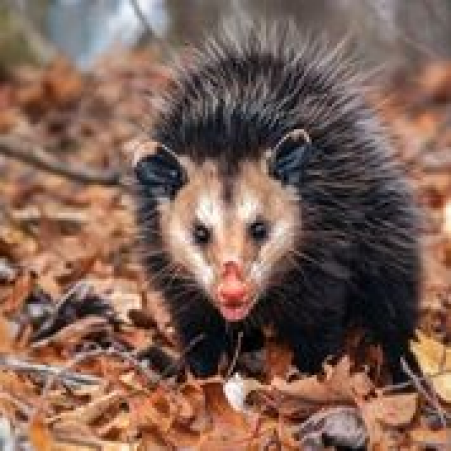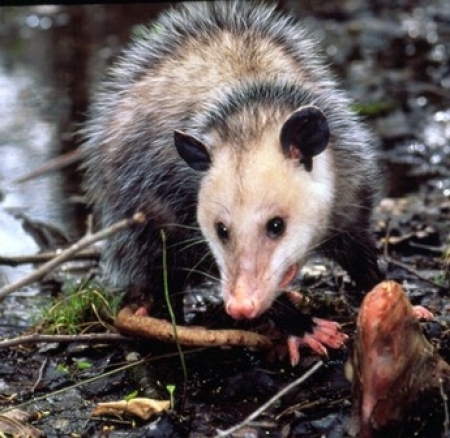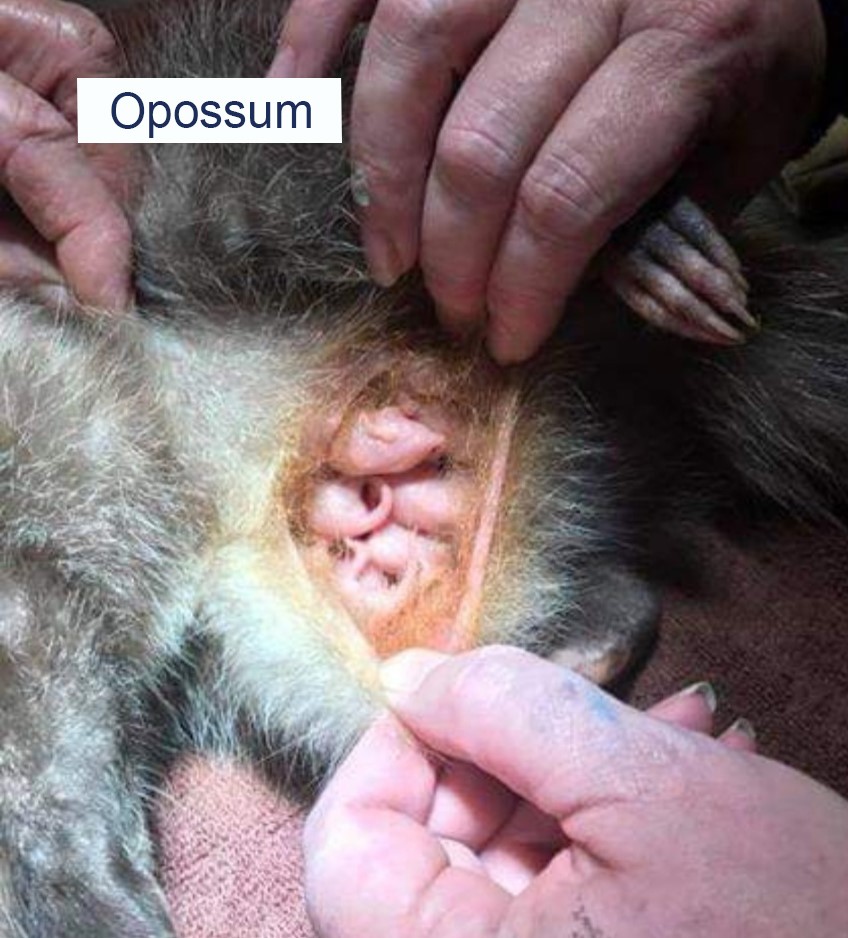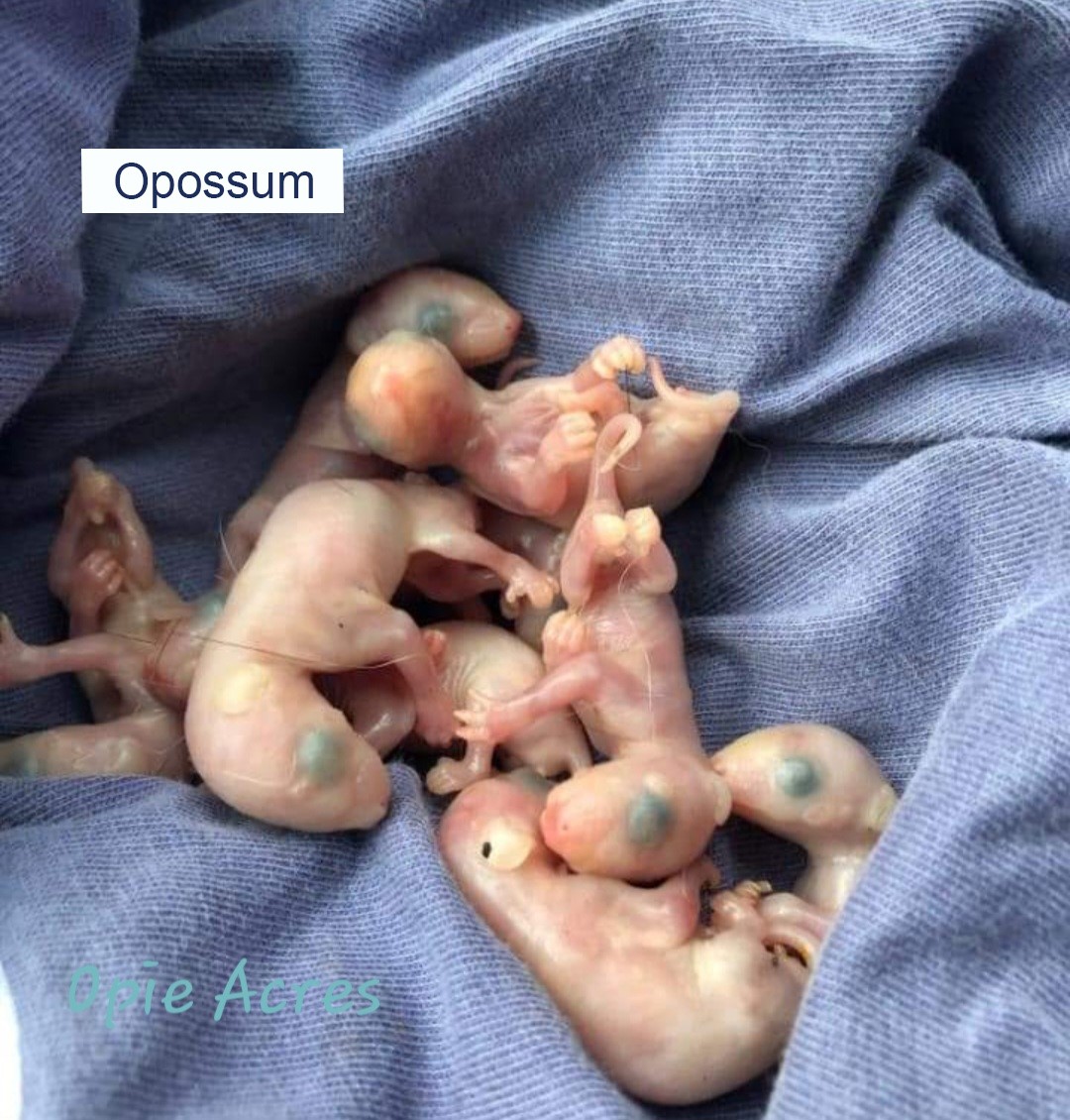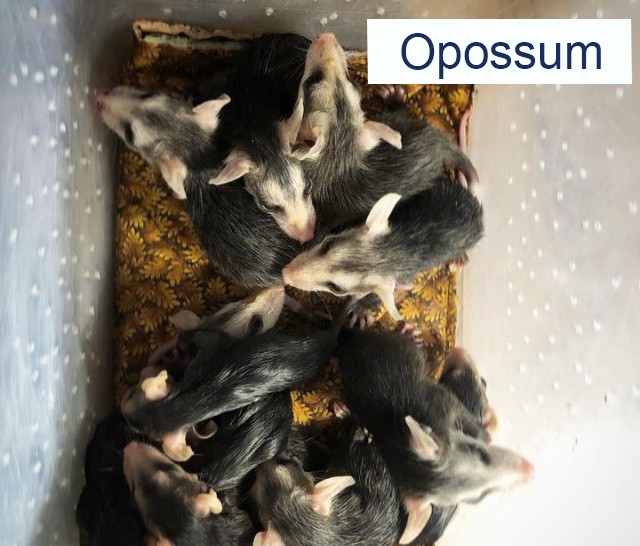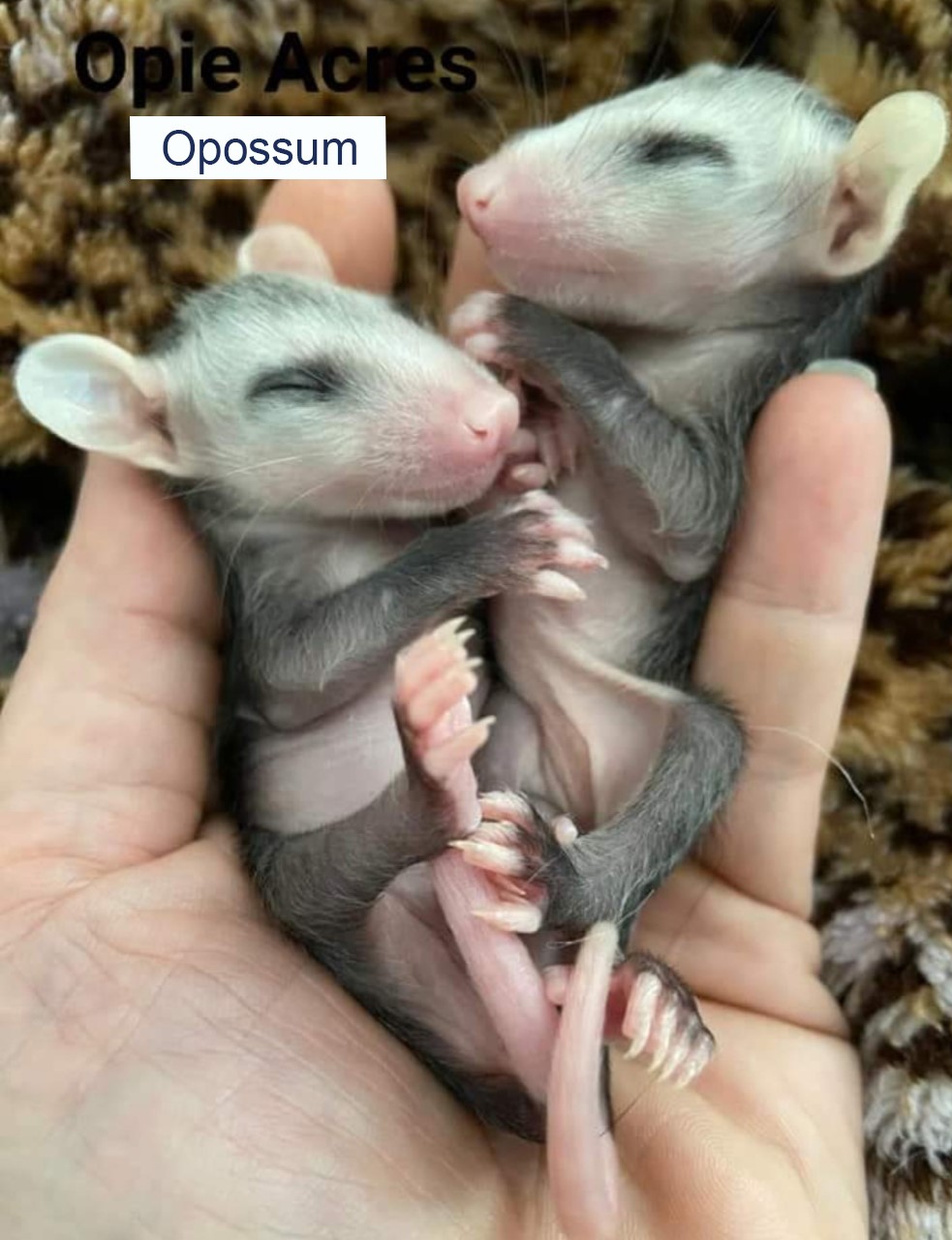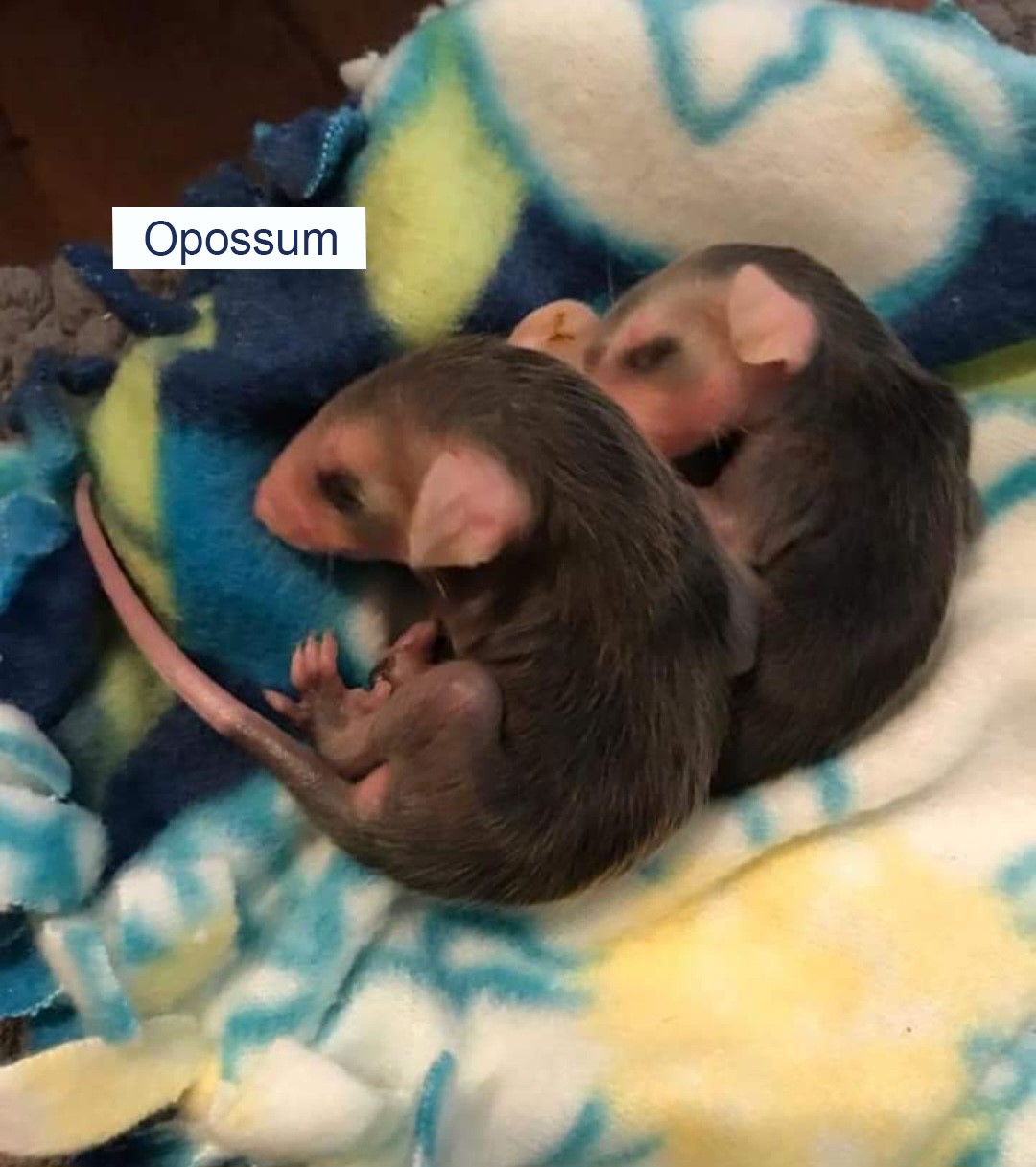Virginia Opossum, Didelphis virginiana
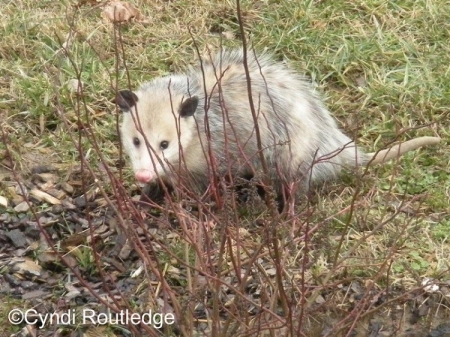
The opossums are actually quite a diverse group whose members are almost exclusively found in South America, the exception being the Virginia opossum. This species is the only marsupial, referring to the abdominal pouch of females for nursing the underdeveloped offspring, found north of Mexico where it is distributed throughout the eastern portion of the United States, including all of Tennessee, extending into New England.
Description: A medium-sized mammal with a lumbering gait about the size of a house cat but much stouter in appearance. It has a white face with a pink nose, a pointed snout, black, hairless ears, short legs, and a long, round, rat-like prehensile tail. The body fur consists of long white hairs contrasting with shorter, black-tipped under hairs giving this species a grizzled gray overall coloration.
Length: 24 - 34 inches
Tail: 9.5 - 15 inches
Ears: 2 inches
Weight: 4 - 15 pounds
Similar Species: None.
Habitat: Part of the success of the Virginia opossum in Tennessee is owed to its willingness to rarely, if ever, pass up a meal, which undoubtedly allows it to exploit a variety of habitat types and situations whether on the ground or in a tree. Though it prefers open forests with a permanent water source, it is equally at home almost anywhere, including agricultural lands and even suburban and urban areas where it is frequently seen along roadways. Known as a solitary wanderer, the opossum seldom remains in a single location for more than a few days. Being primarily active at night, it seeks out cover in the form of brush, hollow trees or logs, or man-made structures by day.
Diet: An omnivorous scavenger that consumes invertebrates, fruits and berries, bird eggs, small vertebrates, and carrion.
Breeding information: Peak breeding happens in the second week of February. Gestation is short (12-13 days), after which an average of 9 tiny (less than ½ inch) young work their way toward the mother's pouch. After 60 days of weaning, the young start to open their eyes and release from the nipples for the first time. At around 80 days, the young begin to control their own body temperature and leave the protection of their mother after an average of 100 days. Opossums of both sexes breed in the first year following birth.
Status in Tennessee: Common statewide.
Fun Facts:
• It has 50 teeth, more teeth than any other mammal in the United States.
• It uses its prehensile tail to carry nesting materials.
• When escape is impossible, it can sometimes feign death by "playing possum" in which the animal enters a catatonic-like state.
Best places to see in Tennessee: Country roads at night.
